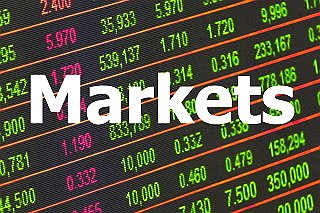Market Commentary February 1

The market first month of this year is booked, American stocks and crude oil achieved a robust start in 2019, along with lots of ups and downs, and the noise in the middle ever since the beginning of the new year.
Thus far we had USA-China trade talks, the Federal Reserve, Venezuela sanctions levied, US Government shutdown fiasco, corporate earnings... However, the month of January showed a powerful comeback following a troubled ending last year, yet, as we have talked wherein, the month of February is of intense interest so stay tuned.
Within the Thursday market session, the DJI closed slightly down minus 0.06 percent but closed the month up over 1670 points. The broader S&P500 index closed the session up 23 points or 0.86 percent, and nearly 200 points up for the month - the robust month in thirty years.
The Nasdaq 100 had the most active trading session as well, closing up almost 99 points - plus 1.45 percent, and up over 640 points for the month. The mid-capitalization index Russell 2000 closed up slightly over 12 points that pencils out plus 0.84 percent, and up over 150 points for the month.
Other Market(s)
Asian-Pacific market response was upbeat with Wednesdays’ Federal Open Market Committee announcement of the unchanged rates, along with the surprisingly dovish tone from Federal Reserve Chairman.
What was to arise was the worldwide market's reaction to this event, with Asian-Pacific markets all performing very well specifically the Nikkei 225 index and the H.K. Hang Seng rising by 1.1 percent along with the core Shanghai Composite index posting 0.4 percent increase.
Huawei Technologies, with the newly imposed charges from America, began to recover by rising 1.8 percent on Thursday. There was more news of Huawei Technologies closed to grow the second-best scoring smartphone market behind Samsung and passing Apple's iPhone.
Eurozone markets did well on Thursday albeit with a weaker Euro Dollar which was the lone loser in the room, with all main currencies beating down the common currency. However, the U.K.'s FTSE100, German DAX, and French CAC40 indices all rose modestly.
An interval of Eurozone economics numbers was delivered yesterday, nothing too assertive to brag about. The French Consumer Price Index numbers were presented and on a Month-over-Month basis lost 0.5 percent, but gained Year-over-Year 1.6 percent. German Unemployment number levels remained at 5 percent with retail sales in December slipping by 4.3 percent.
In contrast, the unemployment number in Italy reaches the 10.3 percent, slightly lower than expectations. Italian Gross Domestic Product for the fourth quarter of 2018, was reduced by minus 0.2 percent, perhaps the blame pointing at U.K. companies already beginning to shift away from major European suppliers.
More encouraging numbers can be found in the Spanish economy, with the Gross Domestic Product rising a decent 2.4 percent opposed to Europe as a whole of 0.2 percent growth.
Europe's Unemployment rate holds at a reasonable 7.9 percent. Today's market will be expecting the core figure Consumer Price Index numbers to be released, along with the European and some manufacturing data from U.K. as well as Germany.
Trading Signals On Demand And What Should You Know!